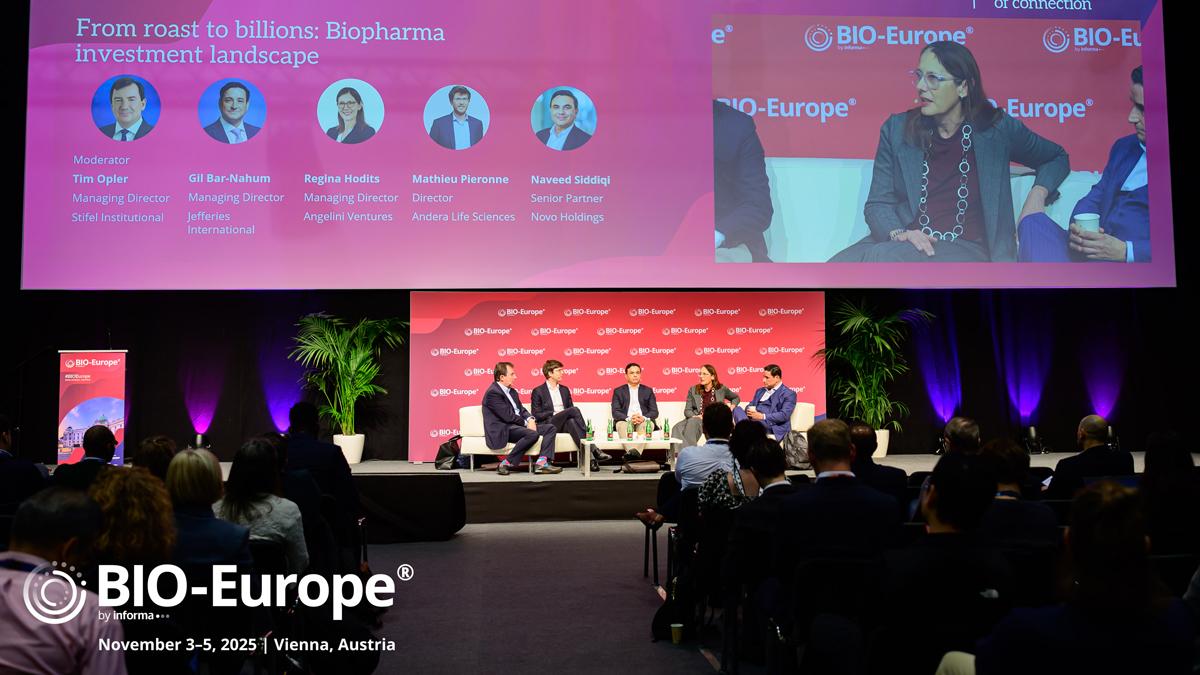Seeing is investing: The power of visuals at every stage of development

Whether your biotech start-up is in its infancy or on the verge of a major acquisition, how you communicate your work – through clear messaging and impactful visuals – can play a pivotal role in attracting the funding and partnerships that will drive your success.
Unfortunately, many early-stage companies struggle with this. Inexperience or a misalignment with the audience's needs can lead to overly technical or dense presentations that don’t resonate with potential investors or partners. As biotech start-ups evolve, the ability to communicate effectively with key stakeholders – those who will fund the next stage of your journey – becomes crucial.
And, as the old saying goes: an image is worth a thousand words.
Early stages: Simplicity over complexity
A common mistake for early-stage biotech companies is overwhelming angel investors with excessive technical detail, often obscuring the true potential of their science. While investors certainly want to understand the technology behind the innovation, bombarding them with overly complex information can be a barrier to engagement.
In the early phases, biotech CEOs – often freshly transitioned from academia – are brimming with enthusiasm about their discoveries, but may lack experience in presenting to a commercial audience. Their instinct is to share every intricate detail of their work. However, early-stage investors are primarily interested in one thing: the potential for success, even if that success could be multiple years into the future. They want to see that your idea is innovative, scalable, and has real-world application in order to open their wallets.
So, how can you communicate effectively? Start by presenting your message in layers.
For instance: first, start by explaining the problem your research aims to solve. Next, provide a simple, clear description of the high-level science involved, accompanied by visuals to give context and show relationships to existing approaches. Finally, provide in-depth scientific data and papers for those who want more technical details. This last step may even be unnecessary unless your investors request it, as even that may be a bit too much.
This tiered approach allows investors to engage at the level they’re most comfortable with, sparking their interest with a high-level overview and giving them the option to explore further as needed. If they find the initial explanation compelling, they’ll be more likely to request more detailed information.
Growth phase: From science to business
As the company matures, you may enter the second phase, where the technical expertise of the founding CEO may no longer be enough to drive the company forward. This is when a seasoned CEO with experience in fundraising and scaling businesses often steps in, shifting the focus toward building intellectual property, refining the company’s narrative, and appealing to a broader group of investors.
While today’s investors are increasingly sophisticated, often possessing advanced degrees and a deep understanding of biotech and pharma, their fundamental interest remains straightforward: Can this company deliver a profitable return? At this stage, the science is more developed, but presenting it clearly – especially to those outside the field – can still be challenging. This is where high-quality visuals, such as a well-crafted animation, can make a significant impact. Investors are inundated with pitches, and a compelling visual can help your company stand out and leave a lasting impression. In our very visual world, which has only become more pronounced as social media and video have become centralised as part of our everyday lives, images have a lasting effect over pure text.
Expansion and acquisition: Strategic visuals
When your company reaches a higher level of stability and growth, it’s typically led by an experienced CEO who knows how to manage the complexities of scaling a business. At this point, the company will likely have made substantial progress in R&D, but the real challenge is securing larger rounds of funding to fuel further expansion.
Here, two potential strategies emerge: securing additional investment or positioning the company for acquisition by a larger pharmaceutical firm. Each of these paths requires a distinct approach.
If your goal is to remain independent and bring your product to market, your pitch needs to demonstrate the company’s ability to achieve commercial success without being acquired. You’ll need to clearly outline the unmet medical need, the product’s potential effectiveness, and the market opportunity. Visuals that illustrate the consumer impact of your product can be a powerful way to communicate these points.
On the other hand, if the aim is acquisition, your pitch will need to focus on factors like clinical trial data, market size, competitive landscape, and patient benefits. Again, strong visual assets can help make your story more memorable and persuasive to pharmaceutical executives.
No matter which path you take, visualising your company’s science and progress is a critical asset. High-quality visuals, from animations to data-driven graphics, can help distill complex ideas, differentiate your company from competitors, and ensure your message resonates with the right audience – whether that’s investors or industry decision-makers.
In a field where your work could change lives, don't let the presentation of your science be an afterthought. Make sure the world not only understands, but also sees the value you're creating.













